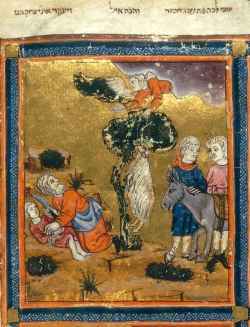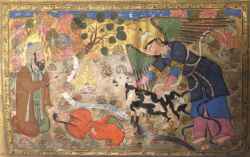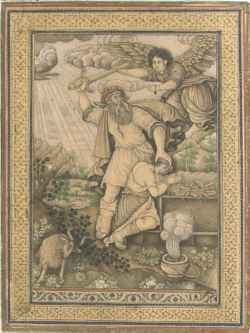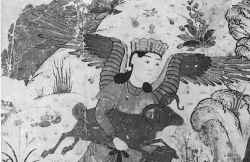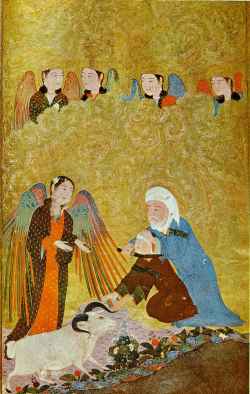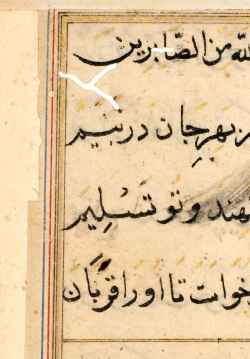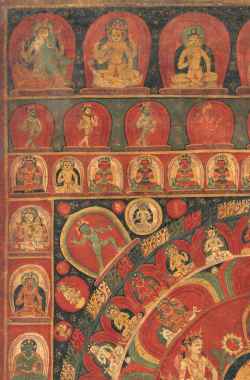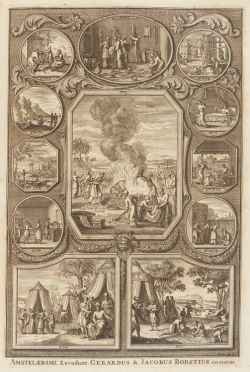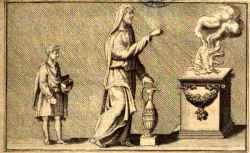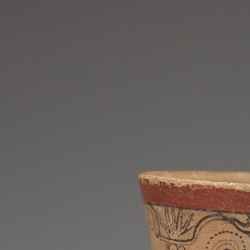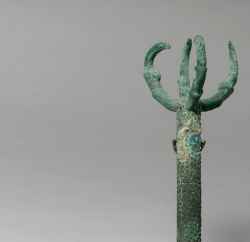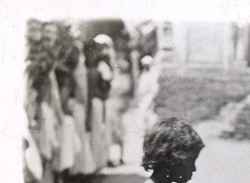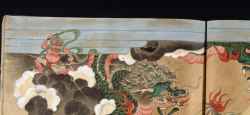Topic: 2. Sacrifice and religion: Comparisons, Antiquarians, Anthropology (16th-18th Century)
Religious sacrifices across various cultures and contexts sparked widespread interest in Early Modern Europe. As Christianity expanded into regions inhabited by "infidels" and "pagans", Europeans encountered a diverse array of sacrificial customs, ranging from the Sati rituals in India to the Aztec sacrifices in the Americas. This cross-cultural exposure captivated a wide audience, including theologians, philosophers, political thinkers, antiquarians, orientalists, missionaries, poets, artists, and even the general public. These encounters broadened the European understanding of sacrifice and led to a critical reassessment of classical and biblical sacrificial rites. This section includes:
- Sources: A selection of early modern printed materials, which include descriptions of the Americas, Asia, and Africa, alongside antiquarian and philological studies on religious sacrifice in classical antiquity and beyond. It also presents early modern works of ethnological observations and the first attempts to compare different sacrificial practices in various traditions and contexts, laying the groundwork for disciplines like the history of religions and anthropology.
- Iconographic Representations: A rich collection of images from the 16th to 18th centuries, illustrating a range of sacrificial rituals and practices as seen in different cultural and geographical contexts.
- Related Bibliography: An extensive bibliography spanning scholarly works from the 19th to 21st centuries, providing contemporary analyses and interpretations of these early studies and observations.
The Sacrifice of Isaac (1275–1324)
from: Haggadah for Passover according to Spanish rite (the 'Hispano-Moresque Haggadah') Created: 1275–1324, Castile, Spain Hebrew
London, British Library, ms Orriental 2737
The Sacrifice of Isaac (1320)
from: Golden Haggadah (northern Spain)
London, British Library, Add 27210, fol. 4v
The Sacrifice of Isaac (16th)
from: Qiṣaṣ al-anbiyāʾ, Nīšāpūrī, Isḥāq Ibn-Ibrāhīm
Staatsbibliothek zu Berlin, Diez A fol. 3
The Sacrifice of Isaac
from: From a late 16C copy of Jami’s Yusuf Zulaikha (IO Islamic 737)
London, British Library, IO Islamic 737
The Sacrifice of Isaac (1755)
from: Hagadah shel Pesah ‘im otiyot ve-tsiyurim na‘im
Hebrew Union College Library, ms. Ms. 447, frontispiece
The Sacrifice of Isaac (1430)
from: Ms Hazine 2153, fol. 119
Istanbul, Topkapi Palace Museum, Hazine 2153, fol. 119
The Sacrifice of Isaac (Persia, Shiraz, Timurid period) (1410-1411)
from: Miniature from the Anthology of Sultan Iskandar (Persia, Shiraz)
Gulbenkian Museum, Lisbon
The sentinel in the employ of the Shah of Tabaristan prepares to sacrifice his son to the ghost of the Shah’s soul (Mughal India, court of Akbar) (1560)
from: from a Tuti-nama (Tales of a Parrot): Second Night
The Cleveland Museum of Art
This mandala is devoted to the solar deity Surya. In the lower register a Vajracharya priest at left performs a fire sacrifice and the repentant donor at center undergoing some form of exorcism accompanied by musicians while his family observes. [1379]
from: Nepal, Kathmandu Valley (Kitaharasa Period: Early Malla period Date)
New York, The Metropolitan Museum of Art
Tripod vessel with baby jaguar sacrifice scene (650–750)
Princeton University Art Museum
Tumi (knife) with a talon (1400-1530)
New York, The Metropolitan Museum of Art
Valmiki instructs Kusha and Lava in the recitation of the "Ramayana" before the occasion of a sacrifice in Rama's palace (1597-1605)
from: The Ramayana (Tales of Rama; The Freer Ramayana), Volume 2
National Museum of Asian Art, Smithsonian Institution, Washington D.
Yamata no Orochi venant réclamer son sacrifice (17th)
from: Bibliothèque nationale de France, Département des manuscrits, Smith-Lesouëf Japonais 177 (1)
Paris, BnF
(1627)
from: Matthäus Rader, Bavaria Sancta, vol. III, 1627, p. 173
from: An illustration from a manuscript of Persian poetry, possibly Divan of Zahir al-Din Faryabi
Sothebys


